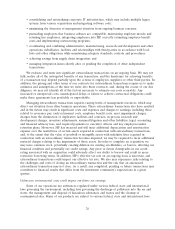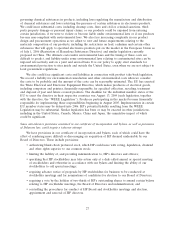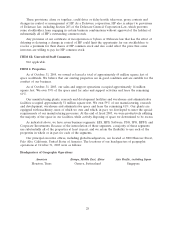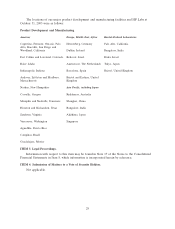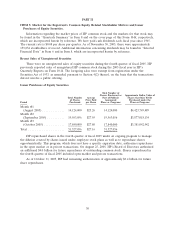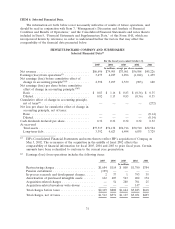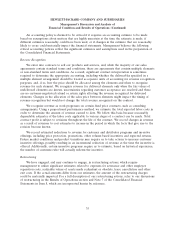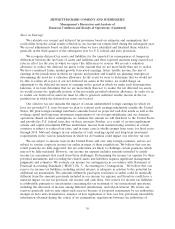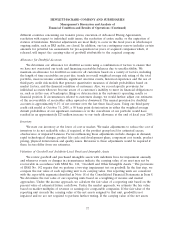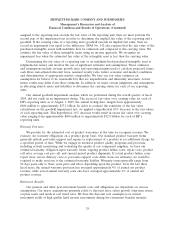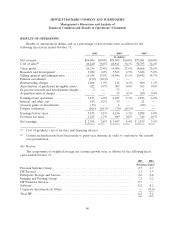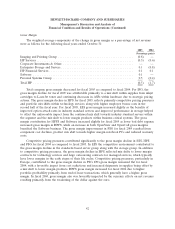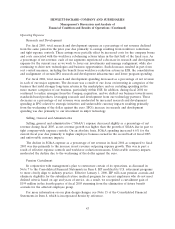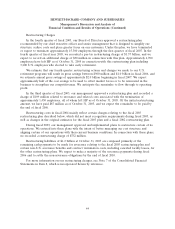HP 2005 Annual Report Download - page 39
Download and view the complete annual report
Please find page 39 of the 2005 HP annual report below. You can navigate through the pages in the report by either clicking on the pages listed below, or by using the keyword search tool below to find specific information within the annual report.HEWLETT-PACKARD COMPANY AND SUBSIDIARIES
Management’s Discussion and Analysis of
Financial Condition and Results of Operations (Continued)
An accounting policy is deemed to be critical if it requires an accounting estimate to be made
based on assumptions about matters that are highly uncertain at the time the estimate is made, if
different estimates reasonably could have been used, or if changes in the estimate that are reasonably
likely to occur could materially impact the financial statements. Management believes the following
critical accounting policies reflect the significant estimates and assumptions used in the preparation of
the Consolidated Financial Statements.
Revenue Recognition
We enter into contracts to sell our products and services, and, while the majority of our sales
agreements contain standard terms and conditions, there are agreements that contain multiple elements
or non-standard terms and conditions. As a result, significant contract interpretation is sometimes
required to determine the appropriate accounting, including whether the deliverables specified in a
multiple element arrangement should be treated as separate units of accounting for revenue recognition
purposes, and, if so, how the price should be allocated among the elements and when to recognize
revenue for each element. We recognize revenue for delivered elements only when the fair values of
undelivered elements are known, uncertainties regarding customer acceptance are resolved and there
are no customer-negotiated refund or return rights affecting the revenue recognized for delivered
elements. Changes in the allocation of the sales price between elements might impact the timing of
revenue recognition but would not change the total revenue recognized on the contract.
We recognize revenue as work progresses on certain fixed price contracts, such as consulting
arrangements. Using a proportional performance method, we estimate the total expected labor costs in
order to determine the amount of revenue earned to date. We follow this basis because reasonably
dependable estimates of the labor costs applicable to various stages of a contract can be made. Total
contract profit is subject to revisions throughout the life of the contract. We record changes in revenue
as a result of revisions to cost estimates to income in the period in which the facts that give rise to the
revision become known.
We record estimated reductions to revenue for customer and distributor programs and incentive
offerings, including price protection, promotions, other volume-based incentives and expected returns.
Future market conditions and product transitions may require us to take actions to increase customer
incentive offerings, possibly resulting in an incremental reduction of revenue at the time the incentive is
offered. Additionally, certain incentive programs require us to estimate, based on historical experience,
the number of customers who will actually redeem the incentive.
Restructuring
We have engaged, and may continue to engage, in restructuring actions, which require
management to utilize significant estimates related to expenses for severance and other employee
separation costs, realizable values of assets made redundant or obsolete, lease cancellation and other
exit costs. If the actual amounts differ from our estimates, the amount of the restructuring charges
could be materially impacted. For a full description of our restructuring actions, refer to our discussions
of restructuring in the Results of Operations section and Note 7 of the Consolidated Financial
Statements in Item 8, which are incorporated herein by reference.
35



